Farm visit: The journey to make money from pig welfare
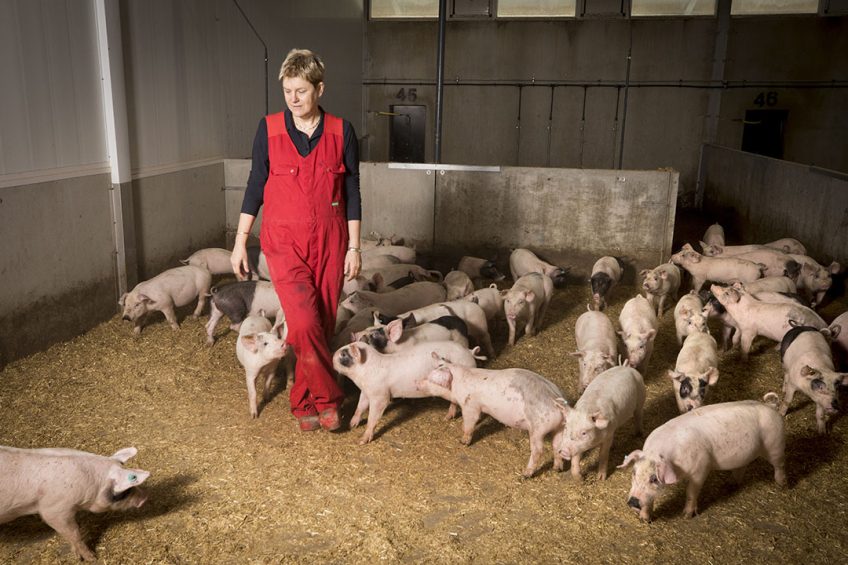
It’s an often-heard objection: Better welfare comes at the expense of profitability, and consumers will always choose cheap pork over premium pork. Annechien ten Have-Mellema, from the Netherlands, did not want to sit and wait. She has been embarking on a journey to prove them wrong.
BANG – it’s an unusual sound to hear while admiring finisher pigs. It is as if someone is slamming a door. BANG – there it goes again, this time from a different direction. And indeed, door slamming it is, but it’s not because someone is angry. At the Ten Have farm, owned by Annechien ten Have-Mellema in Beerta, the Netherlands, the finishers can choose whether they would like to be in or out. The door in every pen falls closed once an animal has crossed the threshold, and that explains the noise.
The two large finishing houses are brand new and started being used in 2018. Finisher pigs on the farm have plenty of space – 1.1m2 per animal indoors and 0.7–0.8m2 per animal outdoors. It is just one of the many examples of how the farm is going all the way to provide attention to both animal welfare and environmental issues – far beyond what is legally required.
Producing pork with two stars
Ten Have farm produces pork that can be sold with two stars in the Dutch animal welfare label scheme Beter Leven (see box). Essentially, Ten Have-Mellema aims to do things differently, with attention for welfare, environment and flavour – and to demonstrate that this can be marketed too.
She says, “I wanted to show that better animal welfare can be done within regular pig farming. Soon I realised that I would need a special brand to market our pork – so the next question was what would be good components for this brand? I needed to know what consumers want. So I started a search for a tastier meat.” For her pioneering attitude she was elected to be Dutch Agricultural Entrepreneur of the Year 2019.

Over the years buildings and elements of the farm have been renovated, rebuilt and updated. This ongoing process of improving and doing better simply never stops – at the time of the visit the group housing area for gestating sows was receiving a new roof, so this summer the sows have been enjoying a good deal of sunshine, a breeze and – it’s the Netherlands – the odd shower.
Outdoor area for finisher pigs
What jumps out immediately at the farm is the space for finisher pigs. Each of the 84 outdoor finisher areas is large and mostly covered with a roof. One part is not covered – so when it rains the floor there can get a bit slippery. Indoors the bedding is furnished with straw for the pigs’ comfort. All pens have distraction materials such as a ball, rope or other type of toy. The animals – non-taildocked and not castrated – do enjoy playing with them, Ten Have-Mellema says.

Automatic straw dispenser
Straw is dispensed to all pens using the StrohMatic, a system developed and marketed by Schauer Agrotronic, an Austrian company specialised in producing farm equipment for pig production. The straw dispensing is completely automatic – all that needs to happen is that up to eight bales of straw need to be supplied to a large container equipped with a conveyor belt, which is placed in a large room adjacent to the pig houses. A refill is needed roughly once every four days, according to Ten Have-Mellema. Next to the container, in the same room, bales of straw are neatly piled up to the ceiling.
When a bale reaches the end of the container, the straw is chopped to the size desired by the farmer, after which it is transported with a large chain system to the various departments. In each pen, holes in the pipes go from small in the front to bigger at the end, so that rations of straw get equally distributed into the pen.
The StrohMatic comes with a fire alarm inside the container as well as with an automatic “deduster” – a large vacuum cleaner that sucks away up to 80% of the straw-related dust in the air.

Manure and biogas
Animal welfare is not the only thing considered important at Ten Have farm – so is manure deposition. A growing issue in the Netherlands is what to do with excess nitrogen, and one way to proactively deal with it is by immediately separating liquid and solid manure. That can be done in the manure pits, where liquid manure trickles through to a deeper gutter for re-use on the farmland for arable purposes.
Solid manure gets scraped away automatically multiple times per day from the manure pits to a central underground alley and then eventually ends up in the biogas tank – where, for example, the contents of the deduster from the straw dispensing machine also end up. The result is a more pleasant smell inside the pig houses. On-site there are two biogas tanks and two tanks for storage.
The biogas plant generates sufficient energy to keep the farm and its houses going; the remainder is sold to an electricity company.

Feed use and distribution
As much as possible, Ten Have-Mellema provides locally grown feed to her finishers. For the proteins that presents an interesting problem as most farmers in the Netherlands include soy in their feed rations, and that is usually shipped in from Latin America.
Not Ten Have-Mellema though. In her search for richly flavoured meat, she teamed up with a project to include lupins in her finisher diets. She ended up growing a variety that isn’t too bitter for the animals on 10ha of her own farmland, with the rest being trucked in from nearby Germany. It is mixed on-site with other ingredients like rye, wheat and bread flour and distributed to troughs in pens. There it is combined with the water supply to create a liquid mix in the trough.
Ten Have-Mellema uses the Spotmix facility, again from Schauer, to distribute the feed rations to her finishers. The system allows for flexible phase feeding at the pen level. This is applied with three different rations throughout the finishing phase, and between each phase there is a gradual change of ingredients so that the switch is not too sudden. The animals receive rations virtually continuously during daytime hours.
Sows and weaner pigs receive feed rations made by a compound feed producer.

Growers: two layers
A pleasant surprise in the grower rooms is the installation of a second floor on top of the regular floor. This is an easy way to allow for additional floor space for the piglets inside an existing pig house. The grower pigs – which have 0.5m2 per animal – enjoy racing up and down. The farm houses are equipped with two Spotmix systems – one for the feed and another to distribute clean and industrially chopped straw on the top floor.
Crate-free area for sows during lactation
Freedom during most of lactation is one of the requirements for obtaining the two-star Beter Leven label. Currently up to 80 of the farrowing pens at Ten Have have already been equipped with free farrowing systems which are always open – even during the first days of lactation. Preweaning mortality is roughly 15%, Ten Have-Mellema says, adding that most victims would be the weaker animals in the litter. At four weeks’ weaning, the farm achieves 29 piglets weaned/sow/year, although she adds that ideally she would like to move to a weaning time of five weeks.
These sows have a space of 2.10m x 3m which is considerably more than is required by law. Most of the free farrowing pens are Pro Dromi design, which is marketed by Vereijken Hooijer, and they come with a large covered piglet nest. The farm also provides jute sacks for when sows want to build a nest prior to farrowing. Ten Have says, “One of the nicest things about this, I must admit, is that the sows can actually look at their piglets. I did not realise this, but this is what sows always aim to do, so they will be always looking at the piglet nest.”
Some of the lactation pens still need converting to free farrowing – and the pigs from these sows will be sold as one-star. In a few rooms, brand new farrowing pens have been equipped by other companies, as the farm would like to compare the effectiveness and working ease of other designs as well.

Feed and outdoor
Ten Have farm is not a three-star facility because the feed she provides to her sows and grower pigs is not organic and because lactating sows have no option to go outdoors – something for which there is no space considering that her farm houses 600 sows.
The farm’s journey is not finished – Ten Have knows that. It’s an ongoing process to becoming more successful, with hiccups and challenges to overcome. At the moment, she has a contract with the Netherlands’ largest retailer Albert Heijn, which sells the pork in roughly 185 stores throughout the country. That contract automatically also led to good contacts with meatpacker Vion in Groenlo, which has a special slaughterline for high welfare animals and where she sends her roughly 180 finisher pigs/week at 130kg liveweight (95kg dead weight). There is slaughterline detection for boar taint. Ten Have also has a deal with retailer Plus and talks are underway with other retailers and meatpackers as well.

The high quality pork is marketed as “Hamletz” or as “Boerderijvlees” (Farm Meat) at the Albert Heijn retail stores. It is characterised as healthier, lean, having less drip loss and being full of intramuscular fat. Exactly which breeds are used is kept secret – as is the premium she receives for each two-star pig delivered to the slaughterhouse.
Proud and outgoing
Ten Have is undoubtedly one of the country’s most well-known swine producers and she is proud and happy to talk about her business to media. Her farm has a nice reception area overlooking part of the finisher houses – and she receives many visitors annually. Understandably, other pig producers in the country follow her steps with a mixture of interest and amazement but also hesitancy. Ten Have understands that and admits that it has been, for instance, difficult to sell every body part under the two-star scheme. She is, nevertheless, convinced that the road she has taken has been the right one for her. She says, “If you don’t try, you will never learn how to get there.”

Animal welfare labels
For more than a decade, Dutch meat, eggs and dairy products can be marketed with a label called “Beter Leven” (Better Life). This animal welfare label indicates the level of welfare the animals received during their lives. Products can be awarded with one, two or three stars depending on the amount of extras farms offered during the life of the animals – with three stars normally being awarded to organic production. The scheme was in 2007 initiated by the Dierenbescherming, an animal welfare organisation of the Netherlands, and has ever since been widely adopted. Under pressure from animal welfare organisations, the vast majority of retailers moved to only selling fresh pork with at least one star.
 Beheer
Beheer
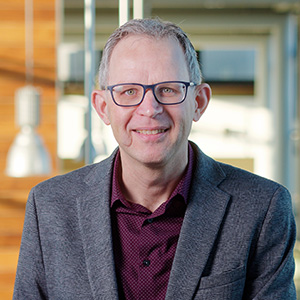
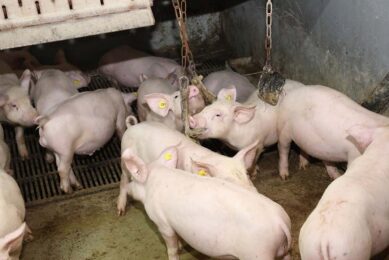
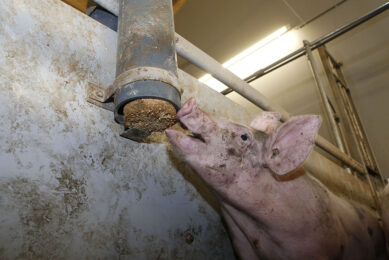
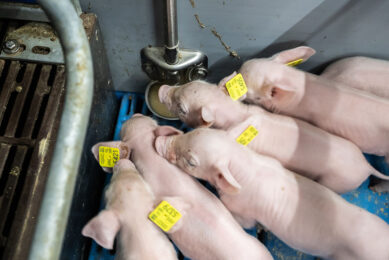
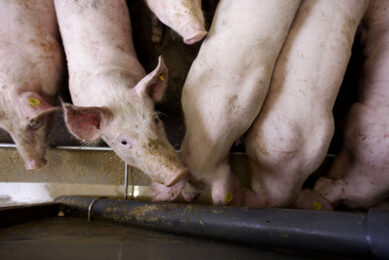



 WP Admin
WP Admin  Bewerk bericht
Bewerk bericht